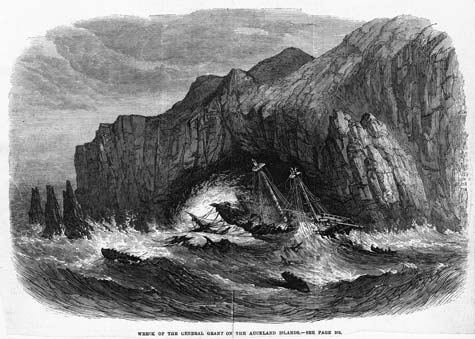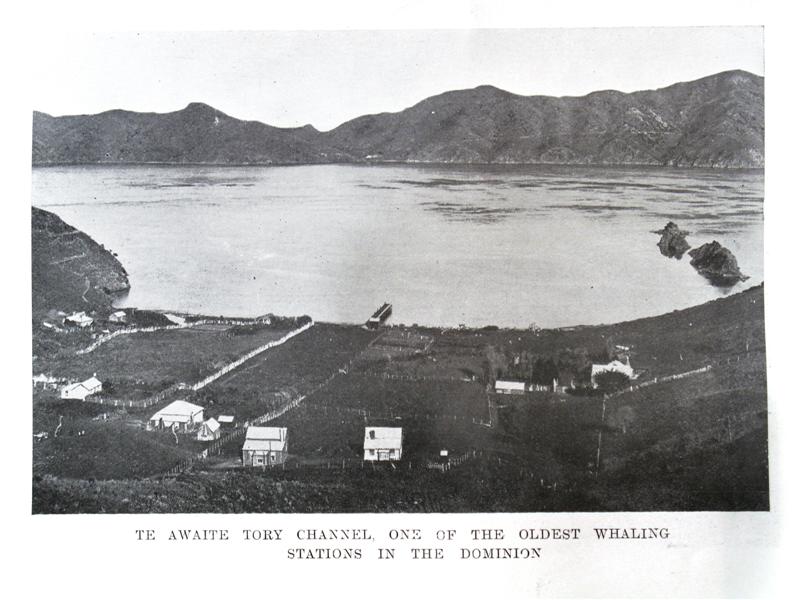Maritime Archaeology in New Zealand
A Developing Discipline
Maritime archaeology, the discipline which examines "human interaction with the sea, lakes and rivers through the study of vessels, shore side facilities, cargoes, human remains and submerged landscapes" [1] is a relatively new field in New Zealand. The sea has played a vital role in the settlement and history of New Zealand, but until recent years, scientific studies of marine sites of both Maori and European origin have been largely neglected in favor of terrestrial sites due to a dearth of experienced marine archaeologists as well as a lack of concentration on and funding for underwater exploration and preservation [2].
Excavation and Salvage Salvage has been conducted by private individuals and companies on some New Zealand marine sites, sometimes with using archaeological techniques, as in the case of Bill Day's 1996 dive expedition on the wreck of an unidentified ship [9]. According to the Marine Archaeological Association of New Zealand (MAANZ), the only submerged sites off the coasts of the country "that have had any sort of archaeological techniques applied to them" are the wrecks of Endeavour, the HMS Buffalo, L'Alcmene, the whale boats from Lake Waikaremoana, Taupo, Martha, and a drowned Pa site in Lake Okataina in the Rotorua District [10].
Protection of Sites Marine sites in New Zealand waters may gain protection under several acts of legislation; these include The Shipping and Seaman’s Act (1952), The Antiquities Act (1975), and The Historic Places Act (1980). Under the Historic Places Act, any vessel that sank over 100 years ago is protected by law. Unfortunately, in many situations, private salvagers disregard the legislation and simply take what they find [11].
Maritime Sites
 General Grant strikes the cliffs [5]
Shipwrecks
General Grant strikes the cliffs [5]
Shipwrecks
Shipwrecks are likely the type of marine site which has the strongest hold on the public imagination and which garners the most attention. Over 2,300 European ships have wrecked in the waters off New Zealand's coasts since the 1790s. Unknown numbers of Maori canoes have also been lost to the sea; the country's waters contain bountiful archaeological resources from which modern scientists can learn about the variety of cultures which shaped the modern nation. Indeed, dangerous waters and their human victims are a reoccuring theme in Maori legend [3].
Mainly due to boat construction methods, a general lack of knowledge about marine hazards offshore, and an almost complete lack of ship guidance devices like lighhouses, the 19th century saw the greatest loss of both ships and life. Some of the recorded European ships which sank or were grounded in the area during this time period include Endeavour (1795), the HMS Orpheus (1863), Fiery Star (1865), General Grant (1866), Tararua (1881), and Wairarapa (1894). Most of these vessels either crashed into cliffs or ran into shallow submerged coral reefs [4].
Only around 150 of recorded shipwrecks have so far been located, and very few of these have been investigated by archaeologists. Ships that have been researched include Endeavour, the HMS Buffalo (1840), L'Alcmene (1851), and Taupo (1881) [6].
Fishing and Whaling Sites
For as long as humans have inhabited New Zealand, the ocean has provided valuable resources to society. Archaeological sites which it is possible to locate and investigate include traditional low Maori dams built for use in conjunction with hīnaki (fish traps), whose function was to divert fish into the traps [7] and shoreline whaling sites, like the Waikouaiti Whaling Station, and whale processing factories. 87 have been located definitively in the country thus far; 25 other sites are possibly also related to the whaling industry. From c. 1830-1840, whaling was New Zealand's primary commercial industry. The main prey taken was the right whale; after its decline due to overhunting, humpbacks and sperm whales increased in relative importance. Traditional Maori methods of whale hunting were used into the 20th century on the East Coast and in the Bay of Plenty [8].

Marine Preservation and Conservation
There are numerous museums throughout the country which serve to preserve and house artefacts as well as to educate the public about the role of the sea in prehistoric and historic New Zealand. These include the Butler Point Whaling Museum, which focuses on the local whaling industry and associated artefacts, the Otago Settlers Museum , also with a focus on whaling and the Thornycroft Torpedo Boat Museum, which displays a 19th century torpedo boat. As the sea was a major source of industry, resources, trade, and mythology, many other museums have collections which, while not maritime-specific, include a large number of artefacts and exhibits related to the sea; for example, the Tairawhiti Museum exhibits the wheelhouse from the Star of Canada, wrecked in 1912. Voyager, the New Zealand Maritime Museum, located in downtown Auckland, seeks to educate the public about New Zealand's marine history. Highlights include viewings of "Te Waka: Our Great Journey," a film about the first great voyage to and settlement of Aotearoa (New Zealand in the Maori language) as well as changing exhibits on Maori canoes and sailing techniques, the journeys of European immigrants, modern yachting, and many other sea-related ventures [12]. For more information, visit the museum website.
External Links
Maritime Archaeological Association of New Zealand (MAANZ)home page
Trade a Boat: Features, Shipwreck Explorer, article on preservationist Noel Hilliam's contributions to the Dargaville Maritime Museum
New Zealand's Maritime Archaeological Heritage unesco notes by Mary O'Keeffe, 2003
Maritime Archaeology general overview from Wikipedia
TeAra.govt.nz, The Encyclopedia of New Zealand: shipwrecks
Footnotes
[1]Wikipedia, Maritime Archaeology [2]O'Keeffe, Mary.New Zealand's Maritime Archaeological Heritage unesco notes [3]Shipwrecks [4]19th Century Shipwrecks [5]The Wreck of the General Grant [6]Underwater history [7]Maori fishing [8]The Archaeology of New Zealand Shore Whaling [9]The Wreck of the General Grant [10]Maritime Archaeology [11]MAANZ bulletin [12]Voyager: New Zealand Maritime Museum